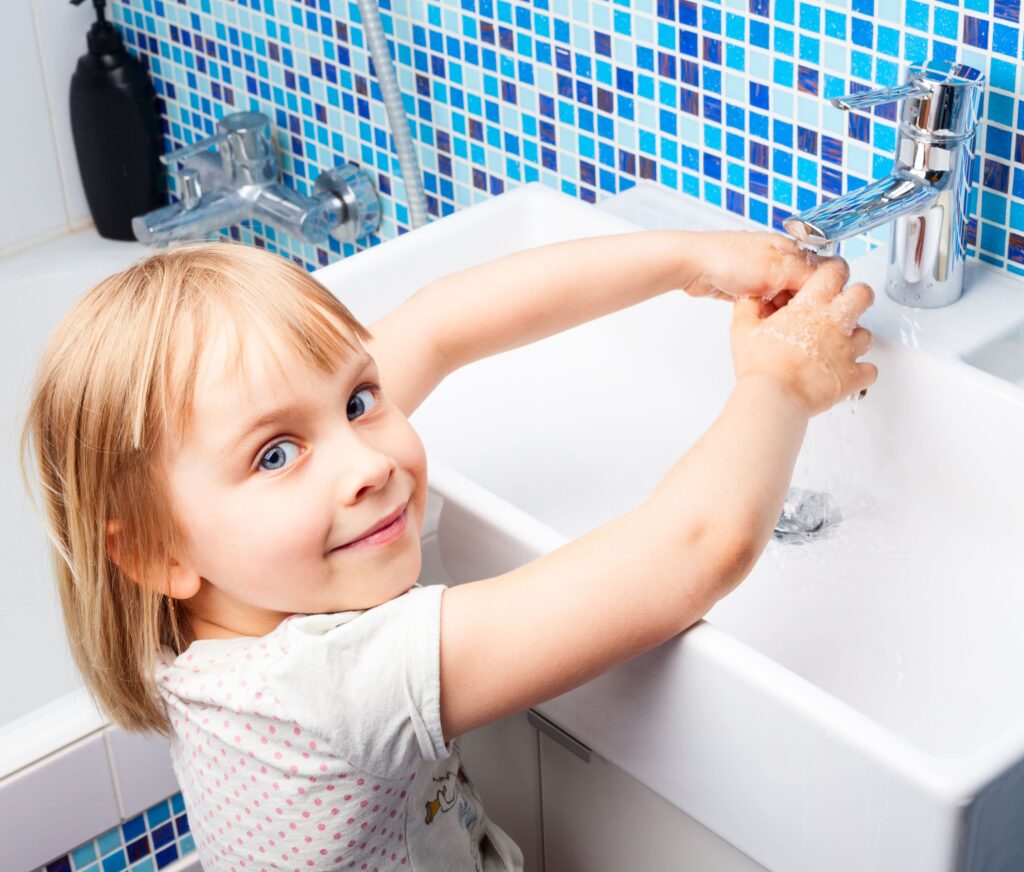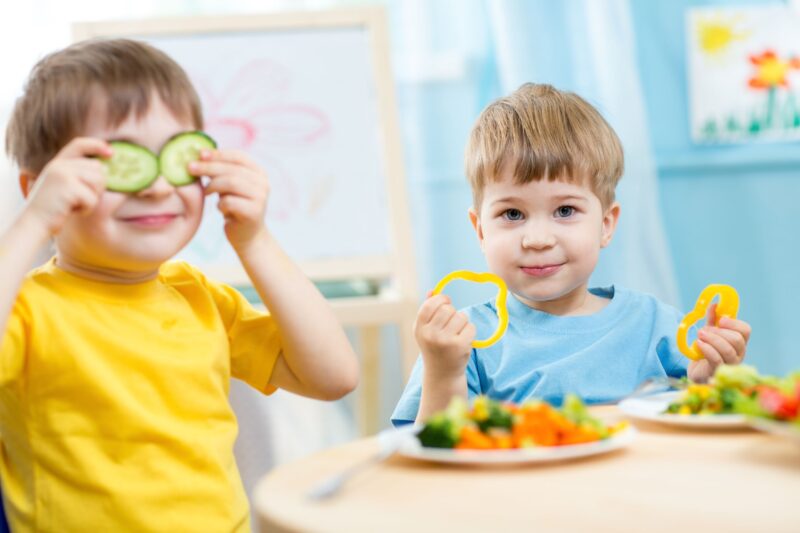Parents should be able to send their children to school knowing they will be safe from bacteria and viruses. However, finding out that kindergartens, preschools, and other early childhood care centers are cleaned and sanitized with strong chemicals is concerning for any parent, especially when these harsh chemicals leave residues that children may be exposed to daily.
The COVID-19 virus is compounding the worries of parents. As schools reopen in some regions, school districts are implementing more robust methods of disinfecting their schools and keeping kids safe from infection. But some may not know that one of nature’s best weapons against viruses and bacteria is ozonated water.
Ozone is a strong oxidant that acts as a natural sanitizer. Sanitization using ozone removes the need for dangerous chemical disinfectants and is an environmentally friendly alternative to traditional sanitization products. Ozone acts 3,000 times faster than chlorine and is 50 times more effective. After the sanitization process ozone simply reforms into oxygen molecules, without emitting any harmful by-products.
Ozonated water, or aqueous ozone, has tremendous oxidation and bacteria-killing properties. There are still some misconceptions regarding the safety and efficacy of using ozonated water as a disinfectant. There may be concerns about the side effects of ozone. In this article, we will discuss common misconceptions about ozonated water and how it can keep your early childhood center safe.
How Is Ozonated Water Formed?
When oxygen is treated with a low-voltage current, its molecules break down and then rejoin. This process forms activated oxygen, (O3) known as ozone. Ozone is commonly found in the atmosphere. When ozone is made from water by using an electrolytic ozone generator, the newly-ozonated water becomes a powerful disinfection agent.
Keeping Your Early Childhood Center Safe from Viruses and Bacteria with Ozone
Among the Covid-19 pandemic, maintaining a sanitized environment has become more important than ever. But parents may be concerned about the disinfecting methods schools are adopting and wonder if their children will be kept safe. Here are some safe ways to keep viruses and bacteria at bay, which can help educational centers get back on their feet.
Install ozonated water generators on taps
Using sanitizers and spraying disinfectants every hour is great for high-school students, but how do you keep kindergarten and preschool students safe? Children can be messy and careless, therefore we recommend that schools install ozonated water systems in their plumbing to ensure children wash their hands with ozonated sanitizing water rather than just tap water. The Water Disinfection System (WDS) from BioSure can be installed on a tap and used to generate ozonated water. This allows students to rinse their hands with ozonated water after thoroughly washing them — a crucial final step to help eliminate viral threats.
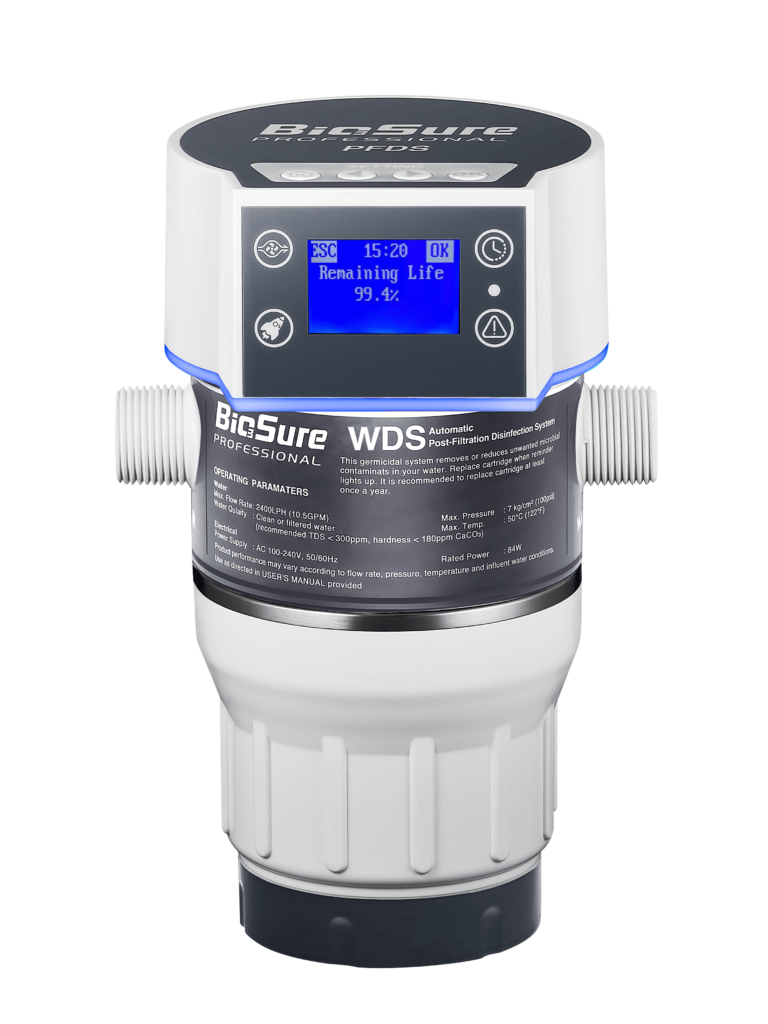
◀ Ozone Water Disinfection System
Maintain a Chemical Free Environment
Conventional industrial chemicals are commonly used to kill bacteria and viruses in large public spaces like schools. However, these chemicals can be harmful to children who can be sensitive to their harsh odors and chemical residues. Chemical sanitizers release harmful gases that have a pungent smell, making it difficult for some to breathe. Moreover, these chemicals, over time, can cause health conditions such as asthma. Ozonated water is a better alternative for early childhood centers as it is odorless and colorless, making it the safest choice for use in schools. Additionally, ozonated water has high oxidation properties that can remove toxic elements.
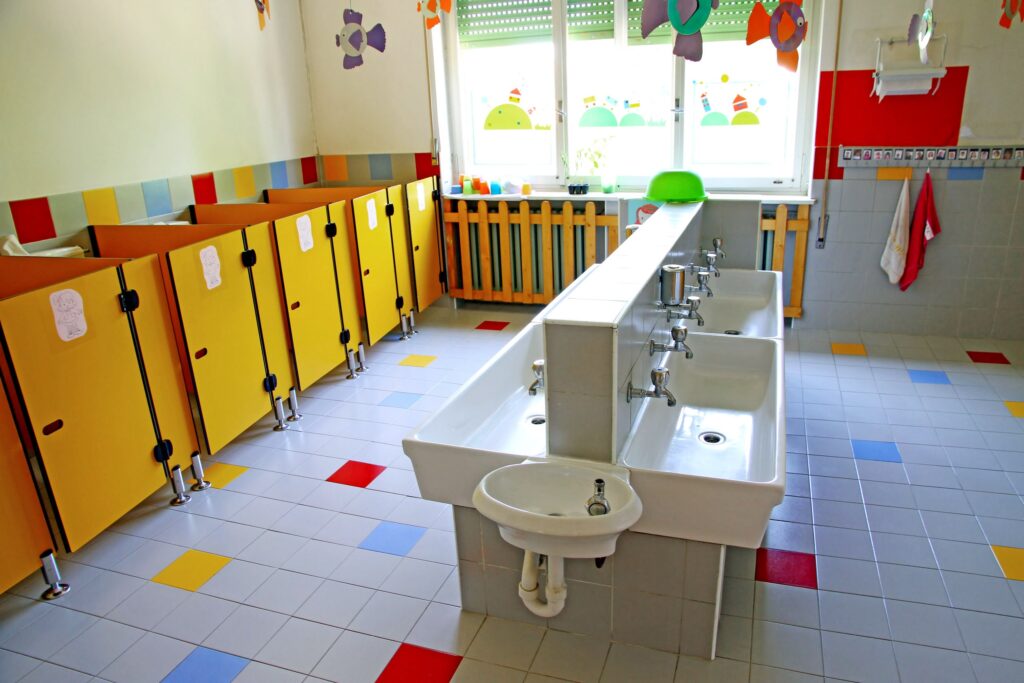
Use an Environmentally Friendly Disinfecting Solution
Educational institutes have a responsibility for providing a safe learning environment. Using chemical products can leave chemical residues that damage the environment. One of the biggest downsides of chemical-based cleaning products is that they end up in natural waterways after being used to clean. Research shows that every year the average American uses 40 pounds of toxic chemicals for cleaning that harm our natural environment.
While ozonated water is considered to be 3,000 times more powerful than bleach, it is an environmentally friendly disinfecting solution that’s safe for humans and harmless to the environment when discarded. Since ozonated water quickly reverts back to clean, pure water, it does not harm the environment in any way.
Disinfect Playground Surfaces
Children spend a large part of their time outside the classroom on the playground. The playground, however, is a red-zone for viruses and bacteria since it’s out in the open. Use an ozone spray bottle such as the OSB from BioSure to spray playground surfaces with high-concentration ozonated water that’s still safe for kids. Spraying ozonated water on play equipment before recess can minimize the chances of catching deadly diseases from surface contact with slides, swings, and other playground equipment.
As a second layer of defense, installing ozonated water taps can minimize viral infection risks from the playground. This way, children can wash their hands before and after going to the playground by using disinfecting ozonated water.
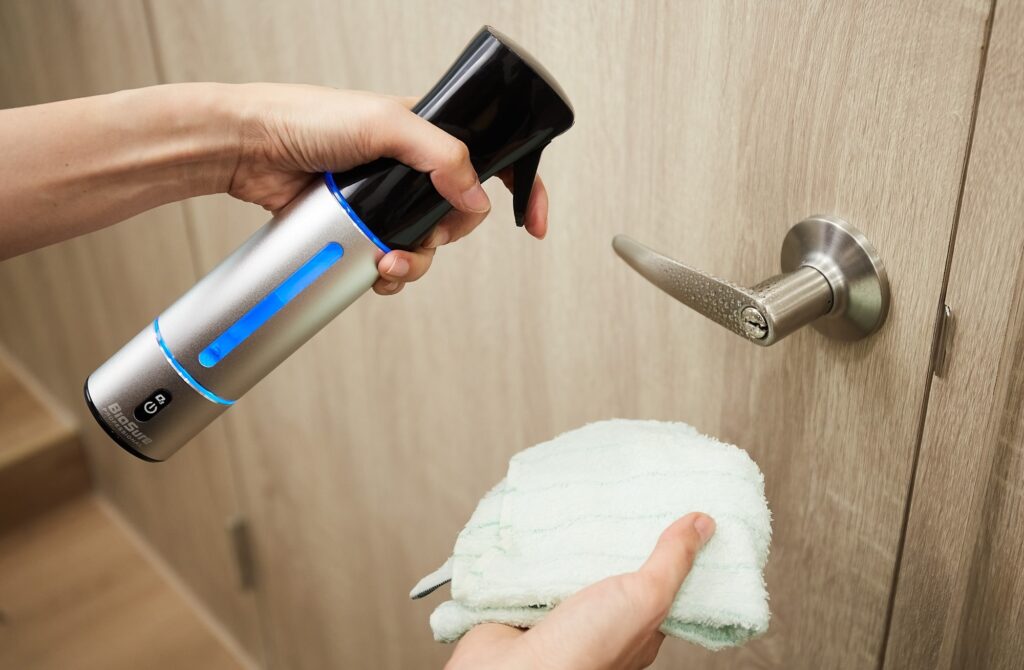
◀ Ozone Spray Bottle Pro
Benefits in Using Ozonated Water for Preschools and Early Childhood Centers
Ozonated water has been used in commercial cleaning for more than a decade and has been used to disinfect municipal water sources for almost a century. Businesses and homeowners have found there are real benefits compared to using chemical disinfection agents. Here are some benefits to using ozone generators for early kindergartens and early childhood centers.
Ozonated Water is Safe For Children
Although ozonated water has been used for a hundred years, it’s only relatively recently emerged as a mainstream sanitizing agent. Using ozonated water for disinfection is entirely safe. Its oxidizing properties are able to kill water-based pathogens that even chlorine can’t eliminate.
Ozonated water or misting ozone from a Space Sanitizer System (SSS) by BES is safer to use around children than chemical sanitizers that leave pungent odors and residues. Ozonated water has activated oxygen molecules that are highly reactive but revert back to clean, pure water in just minutes, leaving no such chemical residues. It can be prepared on sight, so there is no need to transport and store it, as you would with large vats of chemical sanitizers.
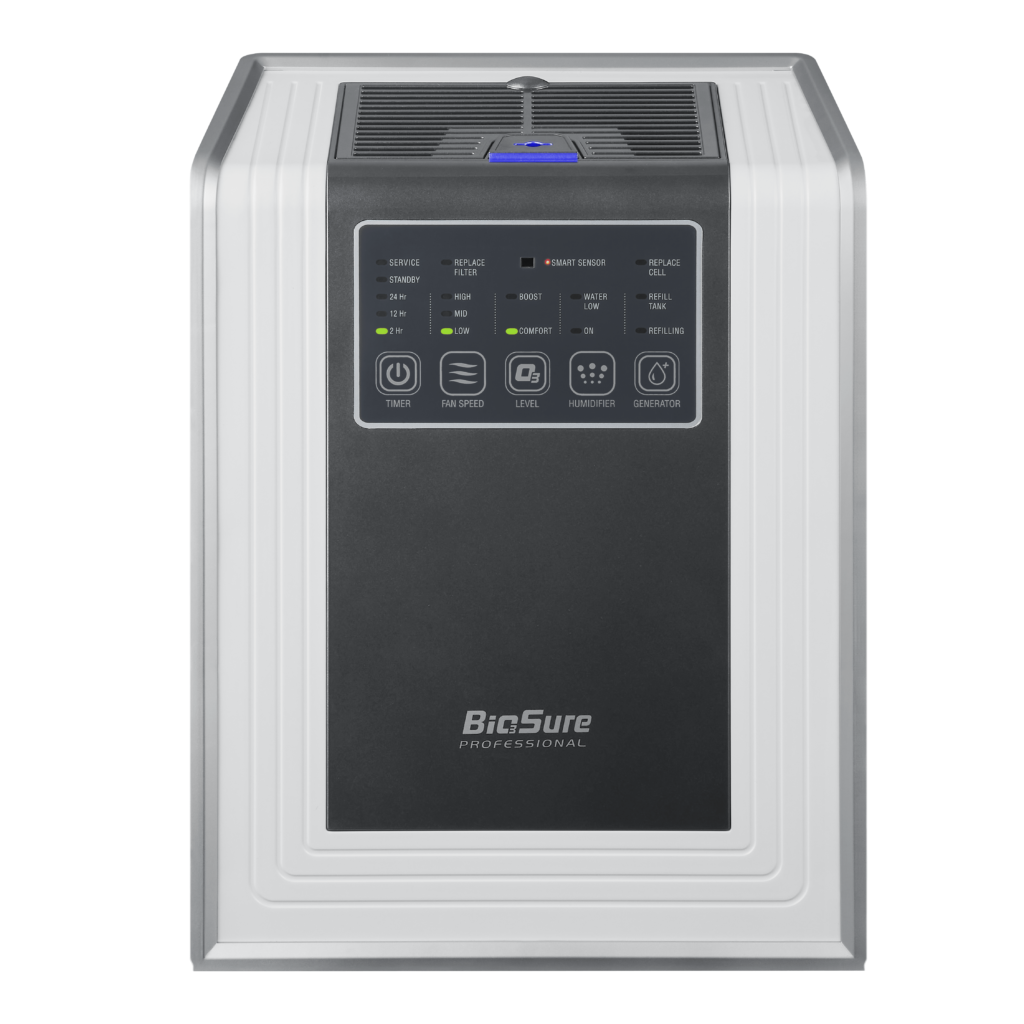
◀ Space Sanitizer System Plus
Ozonated Water Has no Odor
Ozonated water is odorless and releases no odors even after making contact with surfaces. Meanwhile, chemical sanitizers like chlorine have strong odors that can irritate eyes and nasal passages for hours after being used. Young learners are particularly sensitive to these chemicals and may not have a strong enough immune system to fight off allergies and irritation from these chemicals.
Ozonated Water Saves Money
With the widespread use of hand sanitizers made from 75% alcohol spray, preschools and childcare centers are racking up the high costs of stocking enough of these chemical sanitizers for potentially hundreds or thousands of students and staff. With an electrolytic ozone generator that attaches to a water line, students can simply turn on the tap and have an endless supply of hand sanitizer available. This substantially cuts down costs over the long term for schools that are taking measures to protect their students from viruses and bacteria.
Ending Note
As COVID-19 infections increase worldwide, educators have to do their part to keep themselves and others, especially our children — safe from infection. Ozonated water is a solution that is both safe for young kids and better for the environment. It’s also more economical over time and extremely effective, even when compared to strong chemical cleaning agents. Let’s give our kids the best chance of staying healthy during these uncertain times. Installing ozonated water systems in childhood care centers is a smart and easy way to keep learning environments safe.
